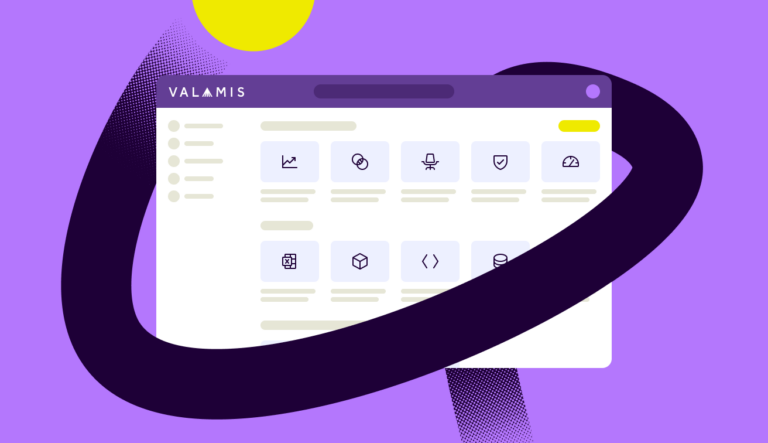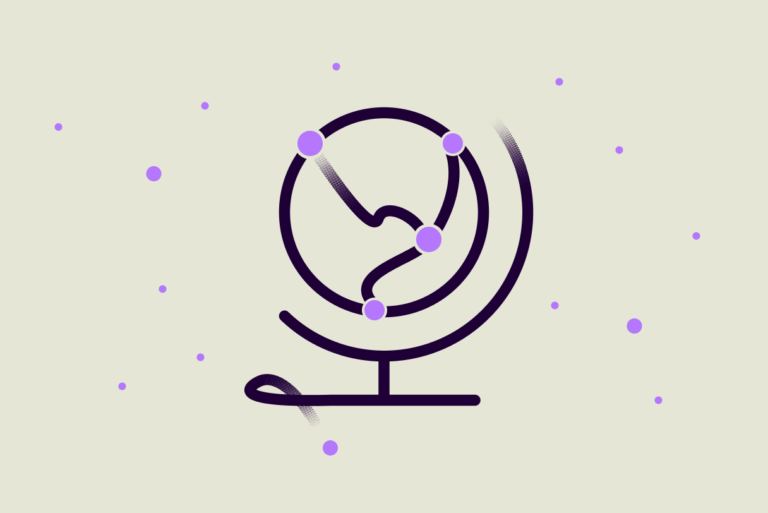Heather McGowan: the future of work is learning
The 4th industrial revolution is changing how we work, learn, and think. Insights from Heather McGowan, a top voice on LinkedIn and a Future of Work Strategist.

The 4th industrial revolution is shaping the world; the way we work, learn and think. We interviewed Future of Work Strategist & Top Voice on LinkedIn Heather McGowan to gain insight on the role learning has in the future workplace.
McGowan began looking closely at the Future of Work about a decade ago when she discovered through both her corporate consulting and her academic work advising university presidents that:
- things were changing quickly;
- many people did not see or understand those changes;
- the only folks explaining the future were either highly academic or offering dystopian views or both;
- perhaps most importantly, there was a need to clearly explain the changes ahead while offering pathways to prepare for the future.
McGowan began offering keynote talks in 2014. She has worked with Amdocs, XQ/Emerson Collective, Citi, World Bank, and AARP, and with other corporate clients that range from start-ups to publicly traded, Fortune 500 companies, which includes Autodesk and BD Medical.
In McGowan’s view, the companies that are thriving and the individuals that are in high demand are those who understand that the future of work is learning – more specifically, the future of work is learning faster than the competition.
The 4th Industrial Revolution: when things wake up
Q: What is the fourth industrial revolution and how does it affect us?
A: We are moving from the third to the fourth industrial revolution. The first industrial revolution was powered by the steam engine; the second powered by electrification and marked by mass production, and the third is enabled by computerization. It is remarkable for the automation of physical labor — and notable for the loss of many manufacturing jobs.
The fourth industrial revolution will be extraordinary for the automation of cognitive work along with the merging of digital, physical, and biological systems.
The merging of systems is a mouthful, but what it really means is where computers were once separate, stand-alone devices that individually connected to a wired infrastructure, soon nearly all man-made objects will have sensors and will be connected to the cloud.
These smart devices are or will be, in constant communication creating a full external neural network. Mickey McManus, Autodesk fellow, refers to this time as “when things wake up”.
Imagine all things, all inanimate manmade objects, have some intelligence and are connected to an external neural network (the internet) freely communicating with each other to optimize performance and use of resources:
Driverless cars, unmanned delivery, and smart homes are all examples of merged cyber and physical systems. Our biological systems are included in this neural network to optimize our health and the responsible use of our natural resources.

100% of work will change
Q: What kind of impact will the 4th industrial revolution have on the workforce?
A: A human in the third industrial revolution had to learn the technology tool (such as a software package or a device) in order to use it. In the third industrial revolution, the educational or workforce preparation focus was myopically on learning the right skills and to master the tools to secure a “good” job.
What is most striking about the fourth industrial revolution is the ability for technology to address mentally routine or predictable tasks—this includes tasks that bundle up to many of those third industrial revolution “good jobs”.
By some estimates, technology now (or in the very near future) can better achieve 30-75% of human existing work tasks. Whether this eliminates half of all existing jobs as some profess is somewhat irrelevant. More importantly, it means 100% of work will change.
The change requires us to think differently about both how we work and how we prepare for that work (education). Our educational model of codifying and transferring set skills and existing knowledge to create a deployable workforce simply no longer works.
We need to stop learning “a set of skills” in order to work. Instead, we need to learn to learn and adapt. This way work turns into continuous learning.
This is why I call my think tank, Work to Learn. This requires a completely new focus on learning agility, adaptability, and the uniquely human/ non-technical hard-to-automate skills such as empathy, communication, creativity, and judgment.

The future of work is learning – and this is why it’s so important
Q: As a result of the fourth industrial revolution, you state that, ‘the future of work is learning.’ Why is it so important?
A: Given the velocity of change driven by exponentially growing technological capabilities, the codify and transfer model of workforce preparation no longer works.
While technology is creating faster change cycles, advancing in health and medicine mean we are living longer and, thus, through many more change cycles. As a result, we must focus on preparing humans to learn and adapt for their entire, much longer, lives.
This is why I say the future of work is learning.
A couple of decades ago when you were hired for a job, you were likely hired based upon past skills and experience and you probably settled into that job adapting your experience to this new context solving similar challenges.
Today, in many industries, you are hired to tackle problems not yet known or even fully understood. I spoke on a panel with someone from Amazon Web Services recently and my fellow panellist reported that at Amazon they reassess their jobs and skills in 24-month increments.
When Amazon hires, they famously hire for cultural fit and learning agility because they know that whatever they are hiring you to do, it will likely change in a matter of months so they want to know how you handle change, uncertainty, failure, and problem framing.
I believe the companies that will survive and thrive will take this same approach.
My colleague Chris Shipley and I recently wrote an article titled, A Company Is Only Culture and Capacity in order to force the focus from the outputs to the inputs.
In accelerated change, a company must continuously reinvent itself. To do so, it must have a stabilizing and guiding operating system, in other words, culture. It must also have ever-expanding capabilities, in other words, capacity.
By focusing on the inputs, a company and its workforce are more prepared to adapt and thrive. Products and services are just evidence of capacity and exhaust from learning.

Innovation begins with learning
Q: You mentioned that business innovation begins with learning, specifically ‘learning faster than your competition.’ In order to ensure that this happens, what are the first action points to take and where should corporations invest?
A: First, understand that the fourth industrial revolution changes how we prepare for work, how we interface with tools, and how we organize ourselves.
Second, as culture and increasing capacity become more important than stored and existing knowledge/skill, hiring must become focused on screening for cultural fit and learning agility.
Third, move from engaging learning experts to transfer knowledge and skill to engaging learning coaches, particularly those with expertise in learning science, and embed them on your work teams.
And fourth, I suggest creating talent maps for the organization that detail what skills and knowledge you have for your current business model and continuously assess those skills and knowledge against the needs for your next business model.
Human capabilities are the untapped opportunity
Q: Do you think that learning and human capabilities get enough attention among other buzzword topics like automation and AI?
A: This is a tremendous area of untapped opportunity. As machines can do things that are mentally routine or predictable better than humans, we should refocus humans on doing unique things that are uniquely human.
“We should refocus humans on doing unique things that are uniquely human”.
I believe we are in an inflection point right now where we need to rebalance our relationship with tools.
Humans are better at things like social and emotional intelligence, empathy, creativity, communication, and collaboration.
A number of years ago the Institute for the Future of Work identified the ten skills for 2020 and NONE of them were technology skills as we speak of them today.
Similarly the World Economic Forum regularly posts their future skills list. It also identifies uniquely human skills.
David Deming of Harvard has long argued that the advances of technology make social skills even more important. As we rush to play catch up, the Future of Work Skills Academy has created online lessons to help folks build these essential skills.
In a side note, many refer to this as the “soft skills gap.” I do not use the term soft skills because it unnecessarily genders the skills. “Hard skills” like math and science were once considered the domain of men and hence “hard skills” correspondingly skills like empathy, communication and creativity were deemed female and thus “soft skills”. I use either, “uniquely human skills” or “nontechnical skills.”

Both company and individuals need to know their superpowers
Q: What are the biggest challenges in “work to learn” thinking – do corporations fully understand the need for learning?
A: The biggest challenges are the mindset shifts necessary for this new reality. On the business side we need to stop the Sisyphean task of hiring and firing based upon past-demonstrated skills and experience.
All entities must shift from lunging to acquire emerging skill sets and instead develop methods of internal building capacity. In this shift, culture becomes the North Star and the internal capacity building becomes the handrail to the future.
Companies have long defined themselves by their products and services they produce and the brands through which they promise that value. I believe a brand is just an expression of culture and products and services are merely evidence of capacity.
For individuals, the shift is moving from a set (occupational) identity based upon your output (title, level, company affiliation) to your input to an identity-based in purpose, passion, and areas of strength, known as you superpowers. This shift requires individuals to develop greater self-awareness about their learning styles, cognitive preferences, purpose and passion, and areas of strength.
The individual must develop a more resilient identity in their internal motivational drivers (purpose and passion) and their (continual growing) areas of strength. This identity is more resilient to changing external conditions because it is internally validated rather than externally bestowed by a corporation that grants employment or an academy that grants a degree or certificate.
This is a tremendous opportunity for corporations to move away from learning and development that is dependent on in-person training to embedding learning experts on teams. Learning experts embedded into teams can help capture learning when it happens and socialize that new knowledge, as well as identifying and responding with needed interventions when the team comes up against capability shortages and capacity limitations.
Reskilling employees will help in retaining tacit knowledge
Q: Can reskilling employees (instead of hiring new employees) help companies save money and stay competitive at the same time?
A: Yes, I do think investing in reskilling, and in employee skills and knowledge development, will help companies save money. More importantly, it will also achieve two other key things rarely measured:
First, it will aid in retaining tacit knowledge. When the workforce is a revolving door measuring only productivity skills we miss all knowledge and know how that is difficult to codify, transfer, or even articulate in a way for which you can hire. We can be as explicit as we want about mission and vision statements as well as core values, but at the end of the day, much of culture is tacit knowledge.
Second and related to culture is morale and engagement. It is hard to keep a workforce engaged under the constant threat of replacement. According to research by Gallup lack of engagement is already costing us $450-$550 billion in lost revenue. AT&T made a bold bet in this arena by offering continuous employment to all who will commit to lifelong learning and skill development.




